Johann Sebastian Bach
Story
|
Johann Sebastian Bach (b. Eisenach, 1685; d. Leipzig, 1750) Born into a musical family, Bach received his earliest instruction from his father. After his father’s death in 1695, Bach moved to Ohrdruf, where he lived and studied organ with his older brother Johann Christoph. He also received an education at schools in Eisenach, Ohrdruf, and Lüneburg. Bach’s first permanent positions were as organist in Arnstadt (1703-1707) and Mühlhausen (1707-1708). During these years, he performed, composed taught, and developed an interest in organ building. From 1708-1717 he was employed by Duke Wilhelm Ernst of Weimar, first as court organist, and after 1714, as concertmaster. During this period, he composed many of his best organ compositions; in his capacity as concertmaster, he was also expected to produce a cantata each month. In Weimar, Bach’s style was influenced by his study of numerous Italian compositions (especially Vivaldi concertos). Bach’s next position, as Music Director for the Prince Leopold of Cüthen (1717-1723), involved entirely different activities. Since the court chapel was Calvinist, there was no need for church compositions; Bach probably used the Cüthen organs only for teaching and practice. His new works were primarily for instrumental solo or ensemble, to be used as court entertainment or for instruction. Among the important compositions at Cüthen were the Brandenburg Concertos, the first volume of Das wohltemperirte Clavier (The Well-Tempered Clavier), the “French” and “English” Suites for harpsichord (although the “English” Suites may be from the Weimar period), and most of the sonatas and suites for other instruments. Bach also composed a few cantatas for special occasions (birthdays and New Years). In 1723, Bach was appointed cantor at the St. Thomas Church and School, and Director of Music for Leipzig, positions which he retained for the rest of his career. His official duties included the reponsibility of overseeing the music in the four principal churches of the city, and organizing other musical events sponsored by the municipal council. For these performances, he used pupils from the St. Thomas School, the city’s professional musicians, and university students. Bach divided his singers into four choirs (one for each of the four main churches); he personally conducted the first choir, which sang on alternate Sundays at St. Thomas and St. Nicholas. His usual performing group consisted of around sixteen singers and eighteen instrumentalists, although these numbers could be augmented for special occasions. During his first six years in Leipzig (1723-1729), Bach’s most impressive compositions were his sacred cantatas (four yearly cycles), and the St. John and St. Matthew Passions. Bach apparently gave virtuoso organ recitals in Leipzig and on various tours, although he had no official position as organist in Leipzig. After 1729 Bach no longer concentrated so completely on composing sacred vocal music. For services, he re-used his own substantial repertory of cantatas, and turned increasingly to the music of his contemporaries. In 1729-1737 and 1739-1741, he was director of the Leipzig Collegium Musicum, an organization which had been founded by Telemann in 1704. This group of professional musicians and university students performed weekly concerts (out-of-doors in the summer, and at Zimmerman’s coffee-house in the winter). Although no specific programs for these concerts have survived, Bach apparently revived and many of his instrumental compositions from Cüthen, wrote new works (e.g., secular cantatas), and conducted pieces by other composers. During the 1730s, Bach renewed his interest in keyboard compositions, and prepared the first three volumes of his Clavier-Übung (Keyboard Practice) for publication (1731, 1735, 1739); the fourth volume appeared in 1741-1742. In the 1730s, he also showed considerable interest in the royal court at Dresden, and was named “Hofkomponist” (court-composer”) in Dresden in 1736. During Bach’s last decade (the 1740s), he completed or revised several large-scale projects which he had started earlier. The Well-Tempered Clavier, Vol. II; a manuscript collection of chorale preludes (known as the “Leipzig 18”, comprising revisions of Weimar pieces), and the B minor Mass. Other new works showed an increased interest in fugal and canonic writing: Musikalische Opfer (Musical Offering); the canonic variations for organ on “Vom Himmel hoch”; and Die Kunst der Fuge ( The Art of Fugue). In the 1740s, Bach made various journeys, most notably to the court of Frederick the Great in 1747. He continued a lively interest in the building of organs, and kept informed about the latest developments in the construction of harpsichords and pianoforte |
Details
- Composer
- Johann Sebastian Bach
- Date of birth
- 31-03-1685
- Nationality
- German
- Albums
- 177
- Tracks
- 4428
177 albums
-

Antonín Dvořák, Maurice Ravel and 12 others
Adagios
-
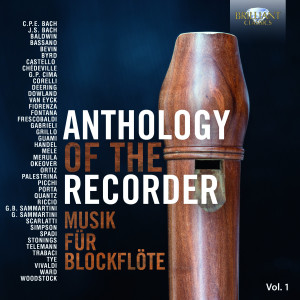
Johann Sebastian Bach, Tarquinio Merula and 19 others
Anthology of the Recorder, Vol. 1
-

Johann Sebastian Bach and Ferruccio Dante Busoni
Bach & Busoni: Complete Transcriptions
-
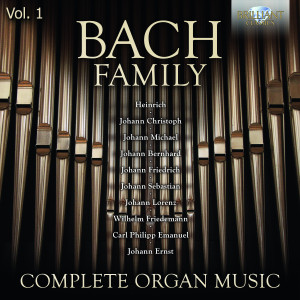
Johann Sebastian Bach
Bach Family: Complete Organ Music, Vol. 1
-

Johann Sebastian Bach
Bach: 12 Organ Concertos after Vivaldi
-

Anonymous, Johann Sebastian Bach and 9 others
Bach: A Guitar Collection
-
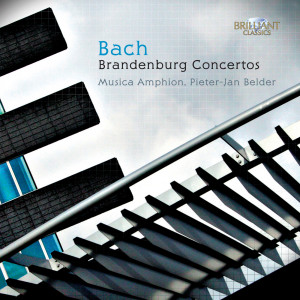
Johann Sebastian Bach
Bach: Brandenburg Concertos
-
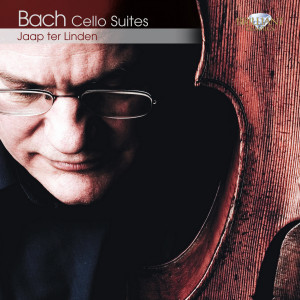
Johann Sebastian Bach
Bach: Cello Solo Suites
-
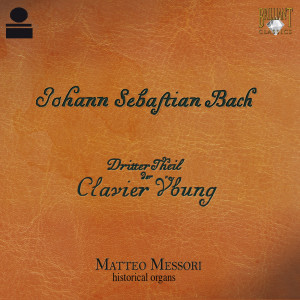
Johann Sebastian Bach
Bach: Clavier Übung, dritter Teil
-
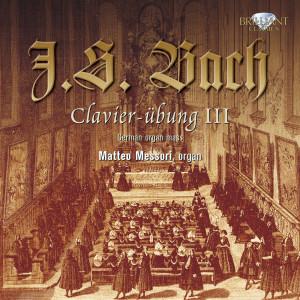
Johann Sebastian Bach
Bach: Clavierübung Teil III
-

Johann Sebastian Bach
Bach: Complete Flute Sonatas
-

Johann Sebastian Bach
Bach: Complete Partitas
-
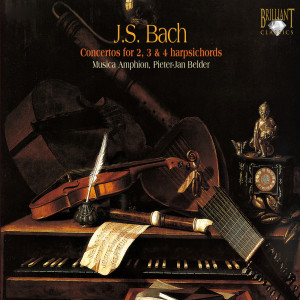
Johann Sebastian Bach
Bach: Concertos for 2, 3 & 4 Harpsichords
-
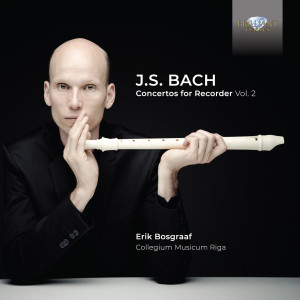
Johann Sebastian Bach
Bach: Concertos for Recorder, Vol. 2
-
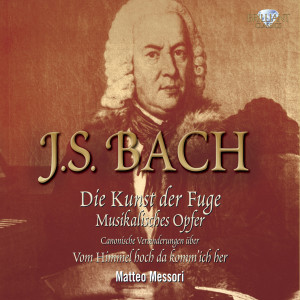
Johann Sebastian Bach
Bach: Die Kunst der Fuge, BWV 1079
-
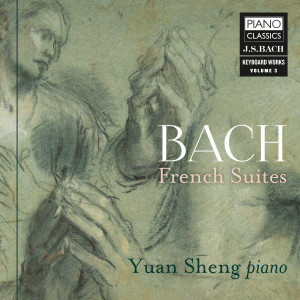
Johann Sebastian Bach
Bach: French Suites
-

Johann Sebastian Bach
Bach: French Suites
-
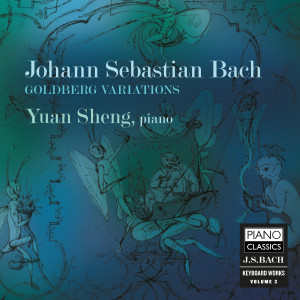
Johann Sebastian Bach
Bach: Goldberg Variations
-

Johann Sebastian Bach
Bach: Goldberg Variations, BWV 988
-

Johann Sebastian Bach
Bach: Italian Concertos
-

Johann Sebastian Bach
Bach: Motets, BWV 225 - 230
-

Johann Sebastian Bach
Bach/D'Albert: Piano Transcriptions
-

Johann Sebastian Bach, Antonio Vivaldi and 2 others
Baroque Edition, The Artistry of Erik Bosgraaf
-

Johann Sebastian Bach, Georg Frideric Handel and 6 others
Baroque Piano Collection
-
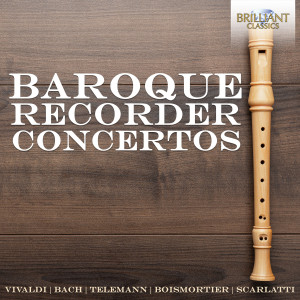
Johann Sebastian Bach, Carl Philipp Emanuel Bach and 10 others
Baroque Recorder Concertos
-

Johann Sebastian Bach, Alfred Schnittke and Jean-Philippe Rameau
Baroque Suites
-
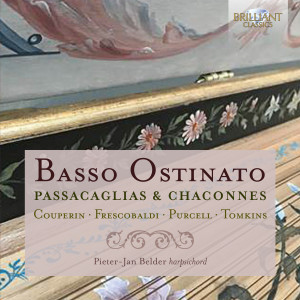
Johann Sebastian Bach, Henry Purcell and 8 others
Basso Ostinato: Passacaglias & Chaconnes
-

Edward Elgar, Georges Bizet and 27 others
Beautiful Classical Melodies
-

Piotr Ilyich Tchaikovsky, Johann Sebastian Bach and 5 others
Best Classical Relaxing Music
-
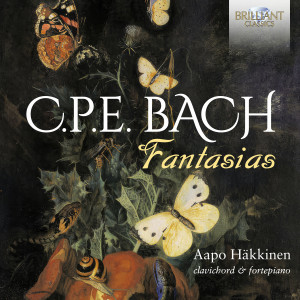
Johann Sebastian Bach and Carl Philipp Emanuel Bach
C.P.E. Bach: Fantasias
-

Johann Sebastian Bach, François Couperin and 3 others
Chaconnes for Guitar
-

Johann Sebastian Bach
Choral Classics: Bach (Chorales), Vol. 1/3
-
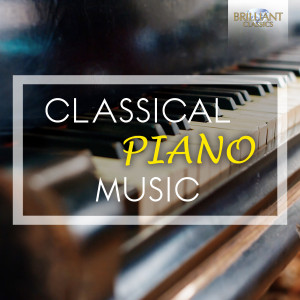
Johann Sebastian Bach, Wolfgang Amadeus Mozart and 17 others
Classical Piano Music
-
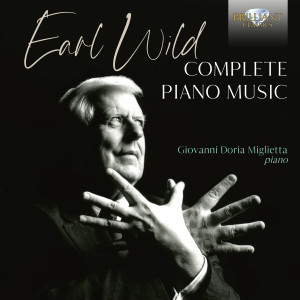
George Frideric Handel, Camille Saint-Saëns and 10 others
Earl Wild: Complete Piano Music
-

Johann Sebastian Bach
J. S. Bach: Complete Organ Music, Vol. 3
-

Johann Sebastian Bach
J. S. Bach: Organ Works
-

Johann Sebastian Bach and Dmitri Shostakovich
J.S. Bach & Shostakovich: Salvation
-
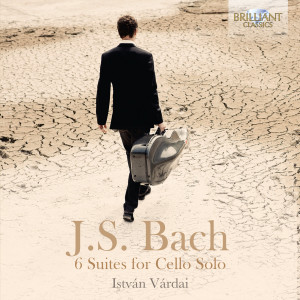
Johann Sebastian Bach
J.S. Bach 6 Suites for Cello Solo
-
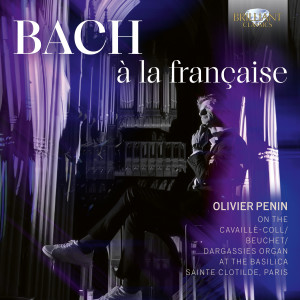
Johann Sebastian Bach
J.S. Bach à la française
-

Johann Sebastian Bach
J.S. Bach and the Early Pianoforte
-
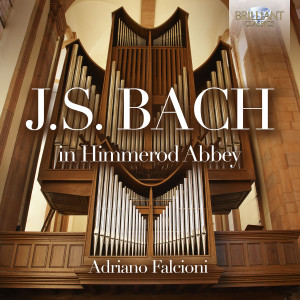
Johann Sebastian Bach
J.S. Bach in Himmerod Abbey
-

Johann Sebastian Bach
J.S. Bach: 6 English Suites BWV 806-811
-

Johann Sebastian Bach, José L. Elizondo and 5 others
J.S. Bach: 6 Suites for Cello Solo BWV 1007-1012
-
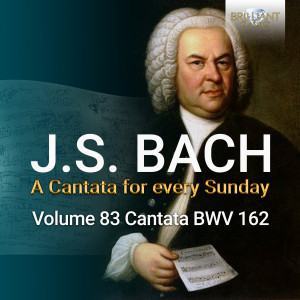
Johann Sebastian Bach
J.S. Bach: Ach, ich sehe, itzt, da ich zur Hochzeit gehe, BWV 162
-

Johann Sebastian Bach
J.S. Bach: Allein zu dir, Herr Jesus Christ, BWV 33
-

Johann Sebastian Bach
J.S. Bach: Ärgre, o Seele, nicht, BWV 186
-
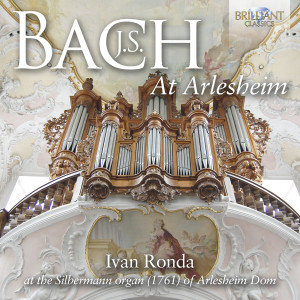
Johann Sebastian Bach
J.S. Bach: At Arlesheim
-

Johann Sebastian Bach
J.S. Bach: Bereitet die Wege, bereitet die Bahn, BWV 132
-
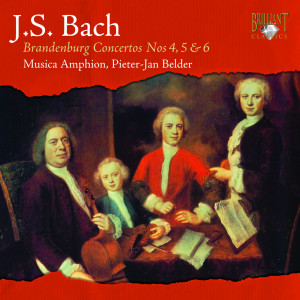
Johann Sebastian Bach
J.S. Bach: Brandenburg Concertos Nos. 4-6
-
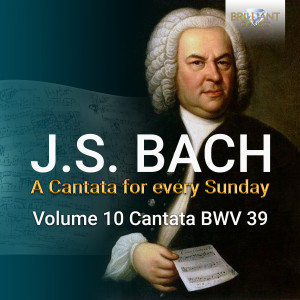
Johann Sebastian Bach
J.S. Bach: Brich dem dem Hungrigen dein Brot, BWV 39
-

Johann Sebastian Bach
J.S. Bach: Bringet dem Herrn Ehre seines Namens, BWV 148
-
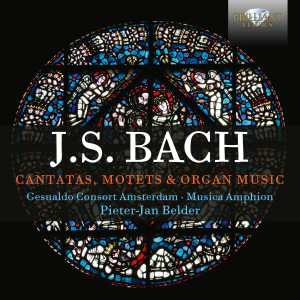
Johann Sebastian Bach
J.S. Bach: Cantatas, Motets & Organ Music
-

Johann Sebastian Bach, Steven Hackett and 6 others
J.S. Bach: Cello Suites
-

Johann Sebastian Bach
J.S. Bach: Christus, der ist mein Leben, BWV 95
-

Johann Sebastian Bach
J.S. Bach: Complete Concertos
-

Johann Sebastian Bach
J.S. Bach: Complete Music for Lute
-

Johann Sebastian Bach
J.S. Bach: Complete Organ Music Vol. 4
-
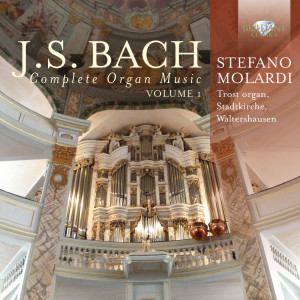
Johann Sebastian Bach
J.S. Bach: Complete Organ Music, Vol. 1
-
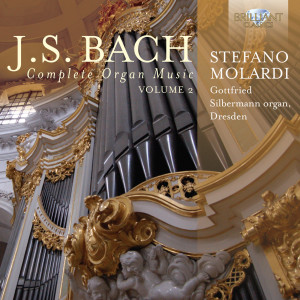
Johann Sebastian Bach
J.S. Bach: Complete Organ Music, Vol. 2
-
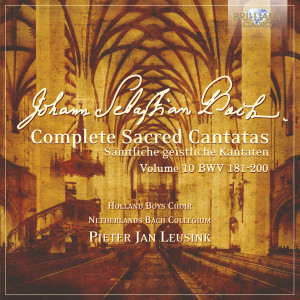
Johann Sebastian Bach
J.S. Bach: Complete Sacred Cantatas Vol. 10, BWV 181-200
-

Johann Sebastian Bach
J.S. Bach: Concerto Reconstructions
-

Johann Sebastian Bach
J.S. Bach: Concertos for Recorder
-
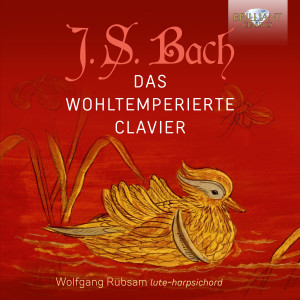
Johann Sebastian Bach
J.S. Bach: Das Wohltemperierte Clavier
-
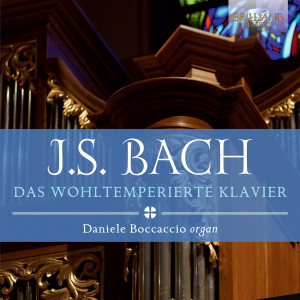
Johann Sebastian Bach
J.S. Bach: Das wohltemperierte Klavier
-
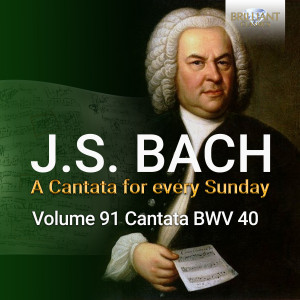
Johann Sebastian Bach
J.S. Bach: Dazu ist erschienen der Sohn Gottes, BWV 40
-

Johann Sebastian Bach
J.S. Bach: Die Himmel erzählen die Ehre Gottes, BWV 76
-

Johann Sebastian Bach
J.S. Bach: Du sollt Gott, deinen Herren, lieben, BWV 77
-

Johann Sebastian Bach
J.S. Bach: Du wahrer Gott und Davids Sohn, BWV 23
-
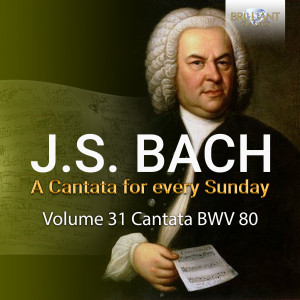
Johann Sebastian Bach
J.S. Bach: Ein' feste Burg ist unser Gott, BWV 80
-

Johann Sebastian Bach
J.S. Bach: English Suites, BWV 806-811
-
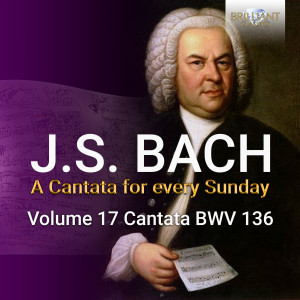
Johann Sebastian Bach
J.S. Bach: Erforsche mich, Gott, und erfahre mein Herz, BWV 136
-

Johann Sebastian Bach
J.S. Bach: Es ist euch gut, dass ich hingehe, BWV 108
-

Johann Sebastian Bach
J.S. Bach: Es ist nichts gesundes an meinem Leibe, BWV 25
-
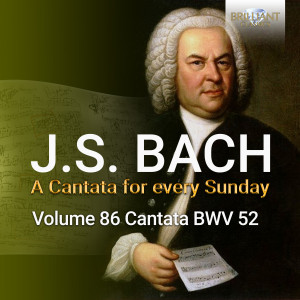
Johann Sebastian Bach
J.S. Bach: Falsche Welt, dir trau ich nicht, BWV 52
-
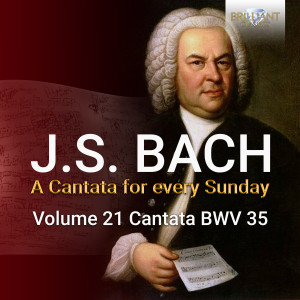
Johann Sebastian Bach
J.S. Bach: Geist und Seele wird verwirret, BWV 35
-
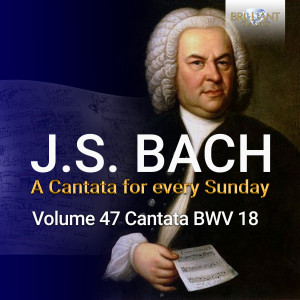
Johann Sebastian Bach
J.S. Bach: Gleich wie der Regen und Schnee vom Himmel fällt, BWV 18
-
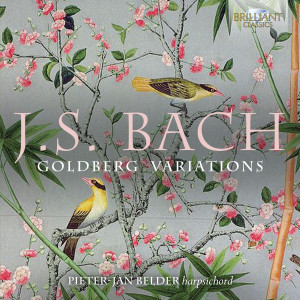
Johann Sebastian Bach
J.S. Bach: Goldberg Variations
-

Johann Sebastian Bach
J.S. Bach: Goldberg Variations
-

Johann Sebastian Bach
J.S. Bach: Goldberg Variations
-
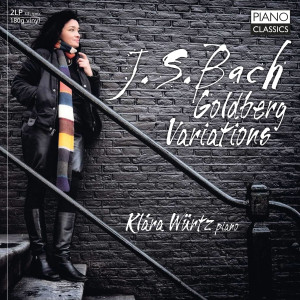
Johann Sebastian Bach
J.S. Bach: Goldberg Variations
-

Johann Sebastian Bach
J.S. Bach: Goldberg Variations
-
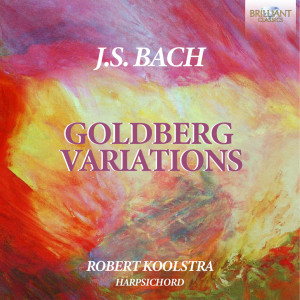
Johann Sebastian Bach
J.S. Bach: Goldberg Variations, BWV 988
-

Johann Sebastian Bach
J.S. Bach: Gott soll allein mein Herze haben, BWV 169
-

Johann Sebastian Bach
J.S. Bach: Guitar Music
-

Johann Sebastian Bach
J.S. Bach: Guitar Music
-

Johann Sebastian Bach
J.S. Bach: Guitar Transcriptions
-
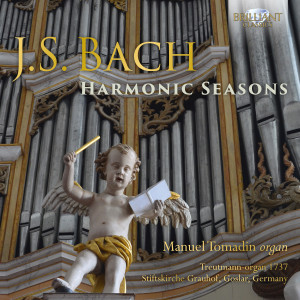
Johann Sebastian Bach
J.S. Bach: Harmonic Seasons
-

Johann Sebastian Bach
J.S. Bach: Harpsichord Concertos
-
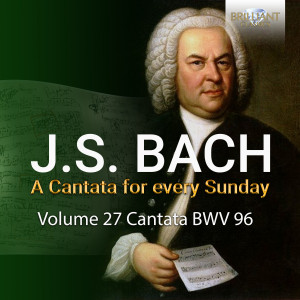
Johann Sebastian Bach
J.S. Bach: Herr Christ, der enige Gottessohn, BWV 96
-

Johann Sebastian Bach
J.S. Bach: Herr deine Augen sehen nach dem Glauben, BWV 102
-
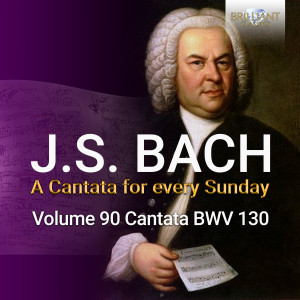
Johann Sebastian Bach
J.S. Bach: Herr Gott, dich loben alle wir, BWV 130
-

Johann Sebastian Bach
J.S. Bach: Herr, gehe nicht ins Gericht, BWV 105
-
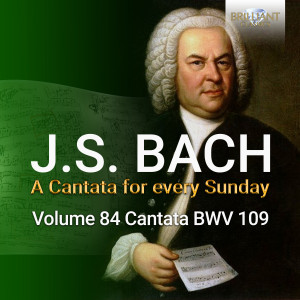
Johann Sebastian Bach
J.S. Bach: Ich glaube, lieber Herr, Hilf meinem unglauben!, BWV 109
-

Johann Sebastian Bach
J.S. Bach: Ich hatte viel bekümmernis, BWV 21
-

Johann Sebastian Bach
J.S. Bach: Ich ruf zu dir, Herr Jesu Christ, BWV 177
-

Johann Sebastian Bach
J.S. Bach: Ich will den Kreuzstab gerne tragen, BWV 56
-

-

Johann Sebastian Bach
J.S. Bach: Jauchzet Gott in allen Landen, BWV 51
-

Johann Sebastian Bach
J.S. Bach: Jesu, der du meine Seele, BWV 78
-
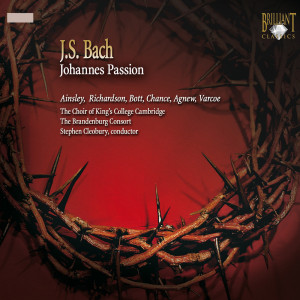
Johann Sebastian Bach
J.S. Bach: Johannes Passion, BWV 245
-

Johann Sebastian Bach
J.S. Bach: Klavierbüchlein für Wilhelm Friedemann Bach
-

Johann Sebastian Bach
J.S. Bach: Kunst der Fuge
-
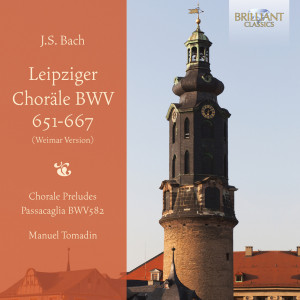
Johann Sebastian Bach
J.S. Bach: Leipziger Choräle, BWV 651-667
-

Johann Sebastian Bach
J.S. Bach: Liebster Gott, wenn werd ich sterben?, BWV 8
-
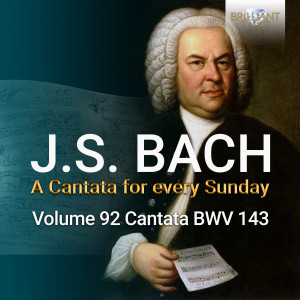
Johann Sebastian Bach
J.S. Bach: Lobe den Herrn, meine Seele, BWV 143
-
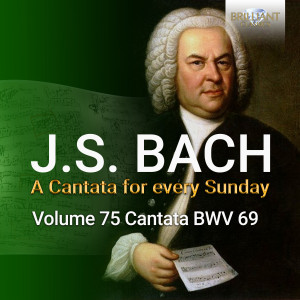
Johann Sebastian Bach
J.S. Bach: Lobe den Herrn, meine Seele, BWW 69
-
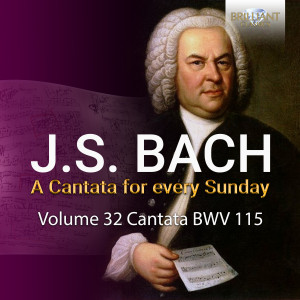
Johann Sebastian Bach
J.S. Bach: Mache dich, mein Geist, bereit, BWV 115
-

Johann Sebastian Bach
J.S. Bach: Matthäus Passion
-

Johann Sebastian Bach
J.S. Bach: Mein Herze schwimmt im Blut, BWV 199
-

Johann Sebastian Bach
J.S. Bach: Meine Seel erhebt den Herren, BWV 10
-
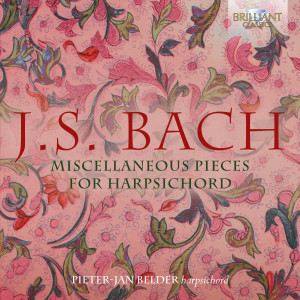
Johann Sebastian Bach
J.S. Bach: Miscellaneous Pieces for Harpsichord
-
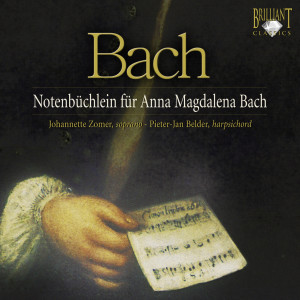
Johann Sebastian Bach, Carl Philipp Emanuel Bach and 4 others
J.S. Bach: Notenbüchlein für Anna Magdalena Bach
-
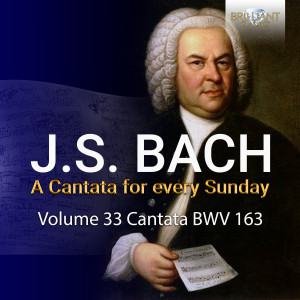
Johann Sebastian Bach
J.S. Bach: Nur jedem das Seine, BWV 163
-

Johann Sebastian Bach
J.S. Bach: O ewiges Feuer, o Ursprung der Liebe, BWV 34
-

Johann Sebastian Bach
J.S. Bach: O Ewigkeit, du Donnerwort, BWV 60
-

Johann Sebastian Bach
J.S. Bach: O heilges Geist - und Wasserbad, BWV 165
-

Johann Sebastian Bach
J.S. Bach: Oboe Concertos
-
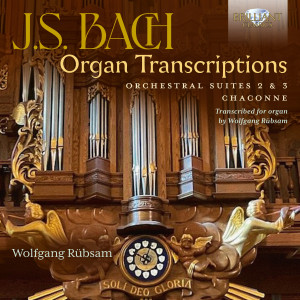
-
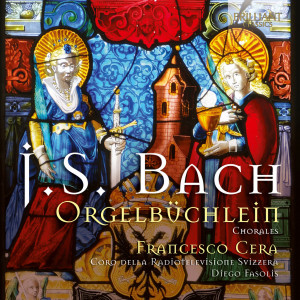
Johann Sebastian Bach
J.S. Bach: Orgelbüchlein, Alternating Chorals
-
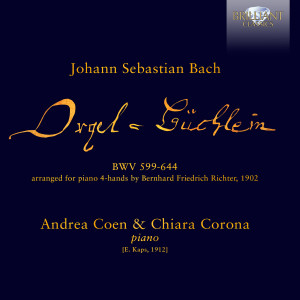
-
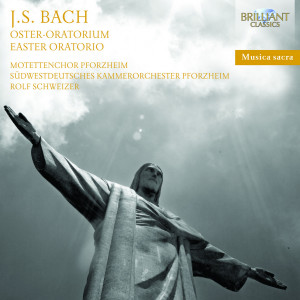
Johann Sebastian Bach
J.S. Bach: Oster-Oratorium (Easter Oratorio)
-
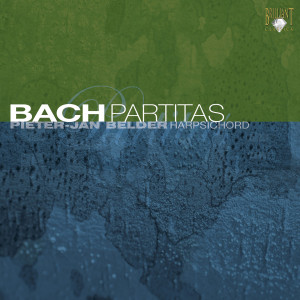
Johann Sebastian Bach
J.S. Bach: Partitas
-

Johann Sebastian Bach
J.S. Bach: Partitas BWV 825-830
-
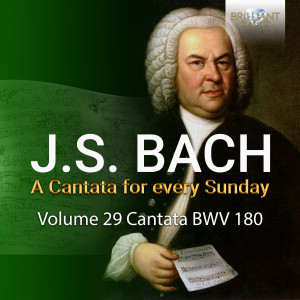
Johann Sebastian Bach
J.S. Bach: Schmücke dich, o liebe Seele, BWV 180
-

Johann Sebastian Bach
J.S. Bach: Schübler Chorales, Preludes and Fugues
-

Johann Sebastian Bach
J.S. Bach: Schwingt freudig euch empor, BWV 36
-
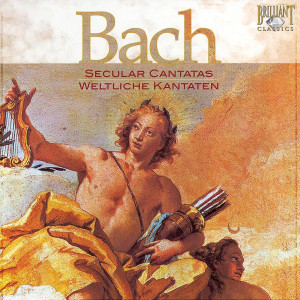
Johann Sebastian Bach
J.S. Bach: Secular Cantatas
-
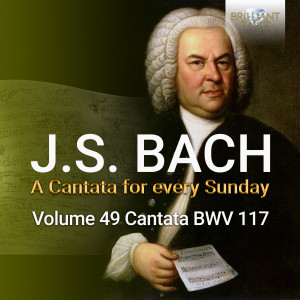
Johann Sebastian Bach
J.S. Bach: Sei Lob und Ehr' dem höchsten Gut, BWV 117
-

Johann Sebastian Bach
J.S. Bach: Six Suites for Viola Solo BWV 1007-1012
-
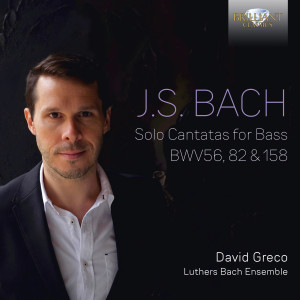
Johann Sebastian Bach
J.S. Bach: Solo Cantatas for Bass BWV 56, 82 & 158
-
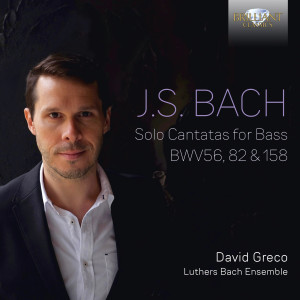
Johann Sebastian Bach
J.S. Bach: Solo Cantatas for Bass BWV56, 82 & 158
-
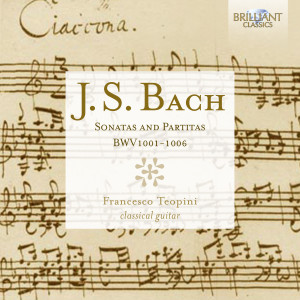
Johann Sebastian Bach
J.S. Bach: Sonatas and Partitas for Classical Guitar
-

Johann Sebastian Bach
J.S. Bach: Sonatas for Viola da Gamba
-

Johann Sebastian Bach
J.S. Bach: The Violin Concertos
-
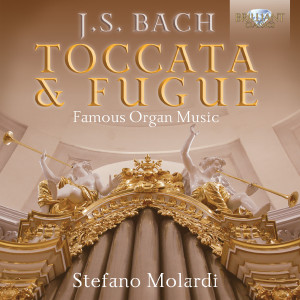
Johann Sebastian Bach
J.S. Bach: Toccata & Fugue - Famous Organ Music
-

Johann Sebastian Bach
J.S. Bach: Toccatas
-
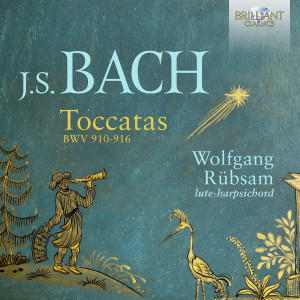
Johann Sebastian Bach
J.S. Bach: Toccatas BWV 910-916
-

Johann Sebastian Bach
J.S. Bach: Transcriptions
-

Johann Sebastian Bach
J.S. Bach: Trio Sonatas BWV 525-530
-

Johann Sebastian Bach
J.S. Bach: Trio Sonatas, BWV 525-530
-
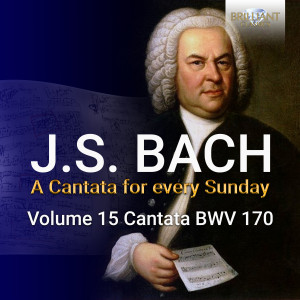
Johann Sebastian Bach
J.S. Bach: Vergnügte Ruh, beliebte Seelenrust, BWV 170
-

Johann Sebastian Bach
J.S. Bach: Violin Concertos, Transcriptions for Organ
-
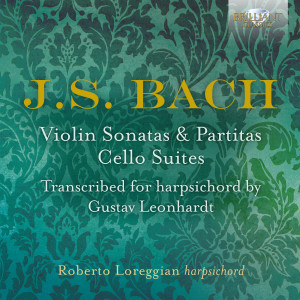
-

Johann Sebastian Bach
J.S. Bach: Was Gott tut, das ist wohlgetan, BWV 98
-

Johann Sebastian Bach
J.S. Bach: Was Gott tut, das ist wohlgetan, BWV 99
-
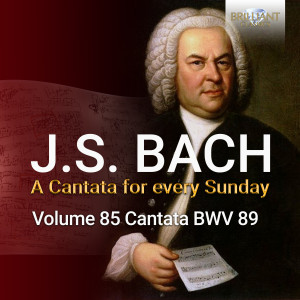
Johann Sebastian Bach
J.S. Bach: Was soll ich aus dir machen, Ephraim?, BWV 89
-
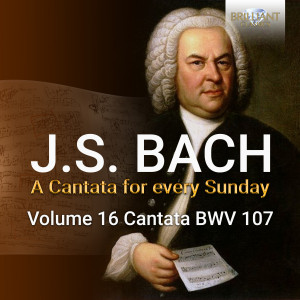
Johann Sebastian Bach
J.S. Bach: Was willst du dich betrüben, BWV 107
-
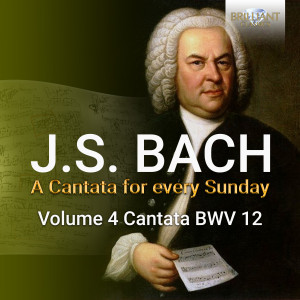
Johann Sebastian Bach
J.S. Bach: Weinen, Klagen, Sorgen, Zagen, BWV 12
-

Johann Sebastian Bach
J.S. Bach: Wer nun den lieben Gott lässt walten, BWV 93
-

Johann Sebastian Bach
J.S. Bach: Wer sich selbst erhöhet, der soll erniedriget werden, BWV 47
-

Johann Sebastian Bach
J.S. Bach: Wo soll ich fliehen hin, BWV 5
-
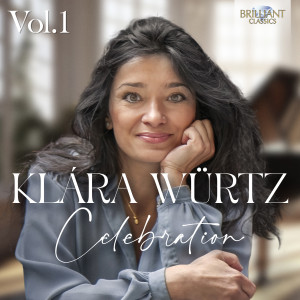
Johann Sebastian Bach, Wolfgang Amadeus Mozart and Franz Schubert
Klára Würtz: Celebration Vol. 1
-

George Frideric Handel, Nicola Porpora and 10 others
Le Baroque
-
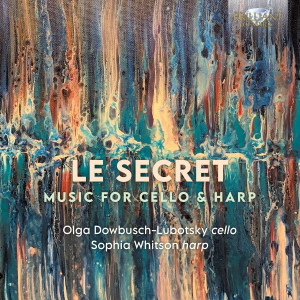
Antonín Dvořák, Camille Saint-Saëns and 9 others
Le Secret: Music for Cello & Harp
-
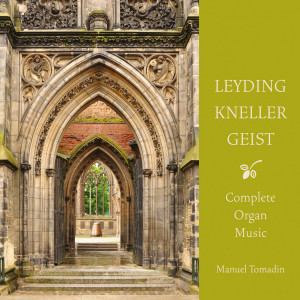
Johann Sebastian Bach, Andreas Kneller and 2 others
Leyding, Kneller & Geist: Complete Organ Music
-

Johann Sebastian Bach, Max Reger and 6 others
Matthias Havinga: Passacaglia
-

Johann Sebastian Bach, Antonio Vivaldi and Tomaso Giovanni Albinoni
Oboe Concertos, Vol. 1
-
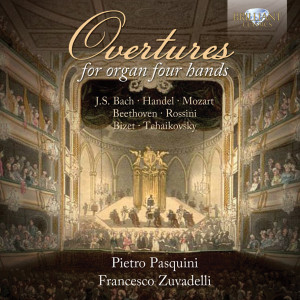
George Frideric Handel, Georges Bizet and 5 others
Overtures for Organ Four Hands
-
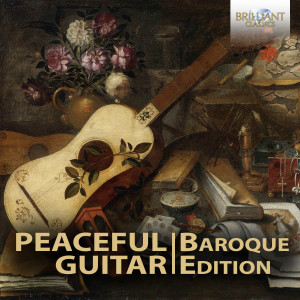
Johann Sebastian Bach, Christian Petzold and 12 others
Peaceful Guitar: The Baroque Collection
-

Johann Sebastian Bach
Quintessence J.S. Bach: Matthäus Passion, Johannes Passion
-

Georges Bizet, Piotr Ilyich Tchaikovsky and 7 others
Rachmaninoff: Moments musicaux, Op. 16, Transcriptions
-

Johann Sebastian Bach, Johannes Brahms and 3 others
Schoenberg: Towards verklärte Nacht
-

Gabriel Fauré, Johann Sebastian Bach and 5 others
Sergio Fiorentino: The Legacy, Vol. 2
-
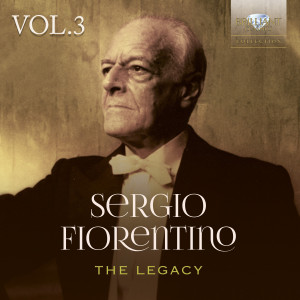
Johann Sebastian Bach, Wolfgang Amadeus Mozart and 6 others
Sergio Fiorentino: The Legacy, Vol. 3
-
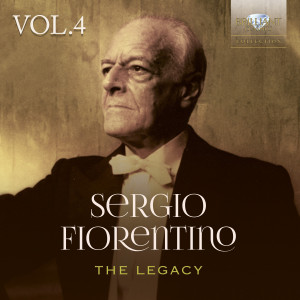
Johann Sebastian Bach, Johannes Brahms and 5 others
Sergio Fiorentino: The Legacy, Vol. 4
-
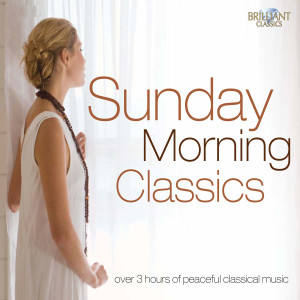
George Frideric Handel, Richard Wagner and 15 others
Sunday Morning Classics
-
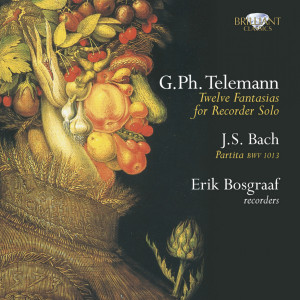
Johann Sebastian Bach and Georg Phillip Telemann
Telemann: Fantasias - J.S. Bach: Partita
-
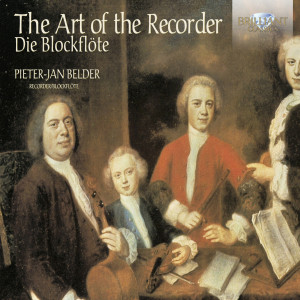
George Frideric Handel, Johann Sebastian Bach and 12 others
The Art of the Recorder
-
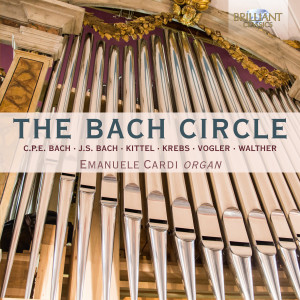
Johann Sebastian Bach, Johann Christian Kittel and 4 others
The Bach Circle
-

Camille Saint-Saëns, Gabriel Fauré and 37 others
The Romantic Age, 500 Years of Classical Music
-

Camille Saint-Saëns, Gabriel Fauré and 15 others
Top 30 Favourite Classical Chillout Tunes
-
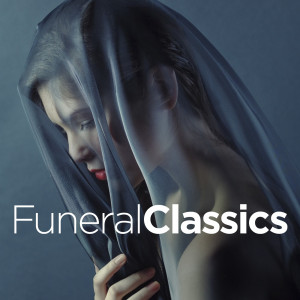
George Frideric Handel, Maurice Ravel and 21 others
Top 30 Funeral Classics
-

Camille Saint-Saëns, Gabriel Fauré and 19 others
Top 40 Favourite Classical Melodies
-
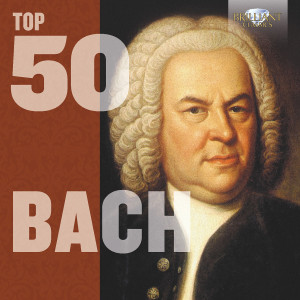
Johann Sebastian Bach and Gottfried Heinrich Stölzel
Top 50 Bach
-

Edward Elgar, Gabriel Fauré and 23 others
Top 50 Classical Voices
-

Johann Sebastian Bach, John Dowland and 5 others
Viola da Gamba Edition, Vol. 1
-

Johann Sebastian Bach and Silvius Leopold Weiss
Weiss & J.S. Bach: Suite SW47 for Guitar and Violin
